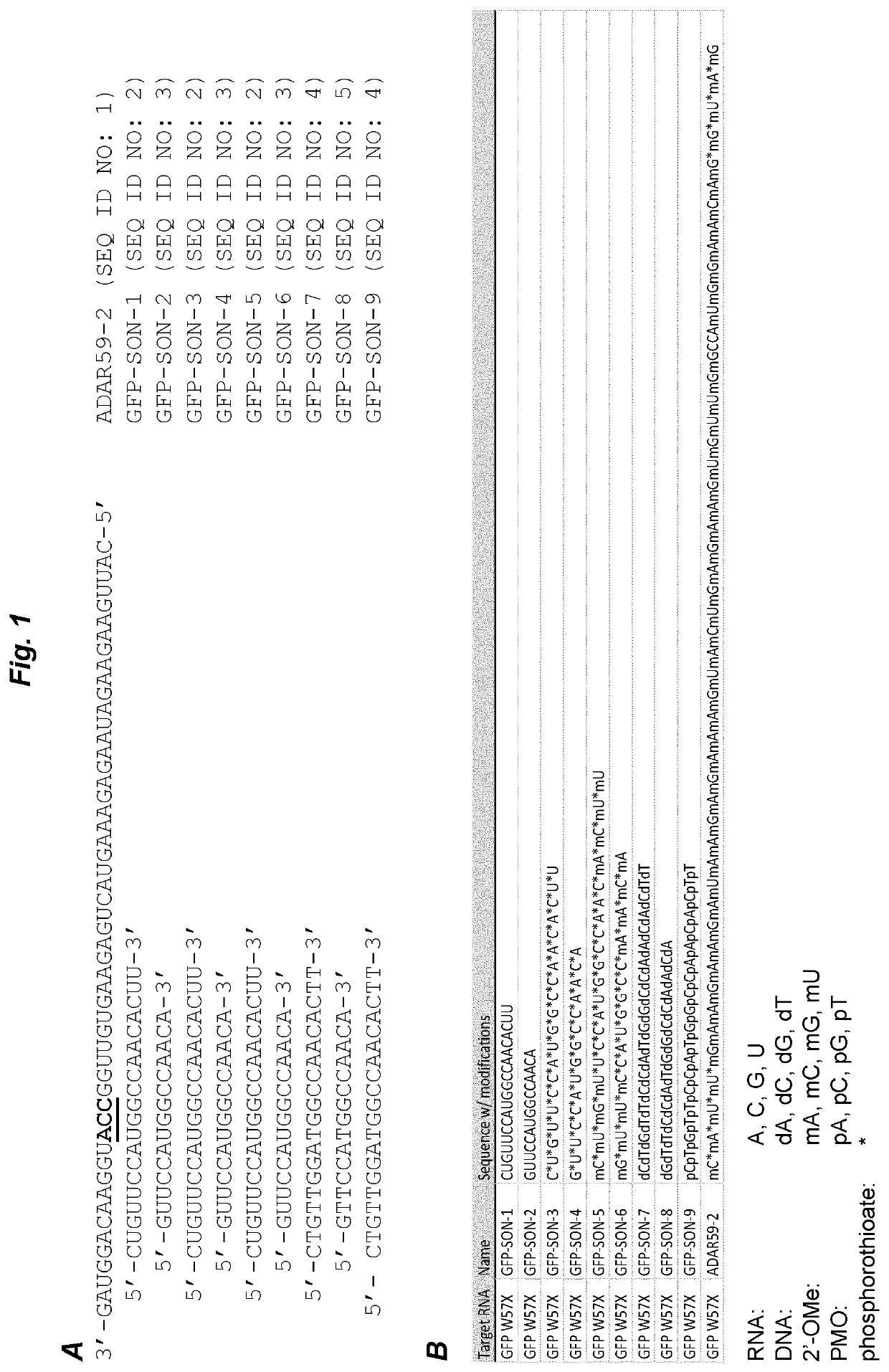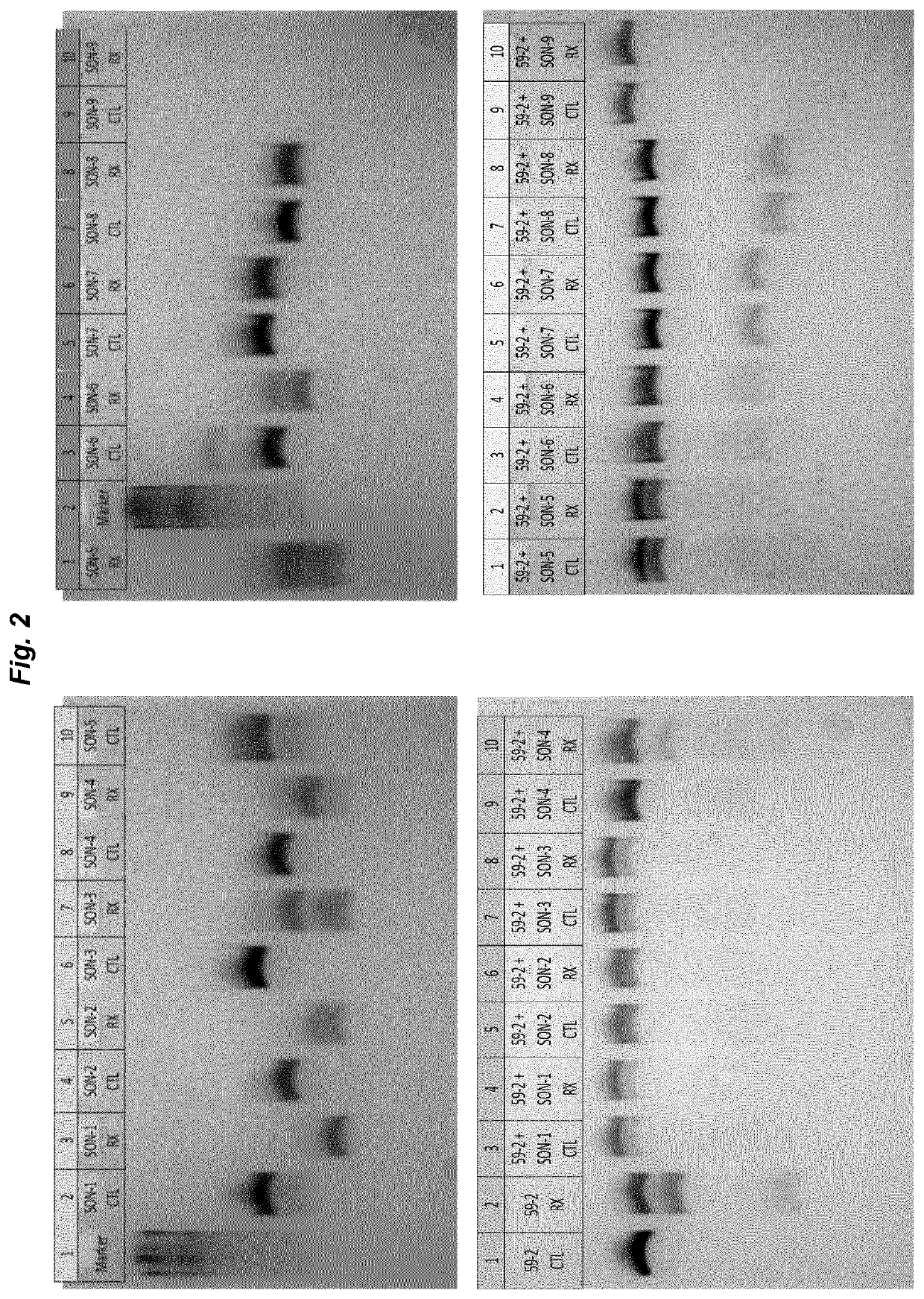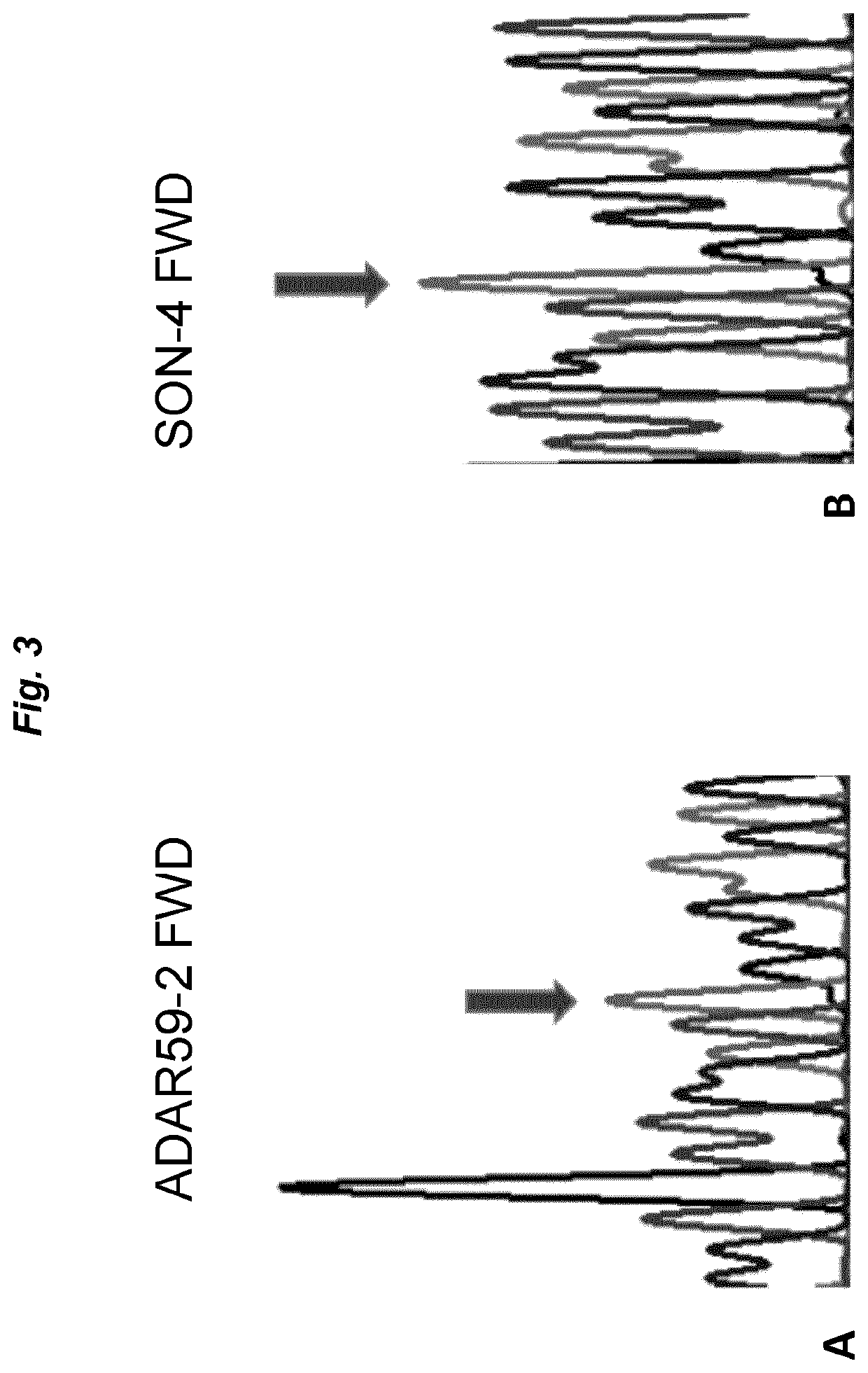Oligonucleotide complexes for use in RNA editing
a technology of oligonucleotide complexes and rna, applied in the field of medicine, can solve the problems of not being able to achieve deamination of a specific target adenosine in the target rna sequence, not being able to achieve the effect at the target nucleotide, etc., and achieve the effect of improving the pharmacokinetic and/or pharmacodynamics of the complex
- Summary
- Abstract
- Description
- Claims
- Application Information
AI Technical Summary
Benefits of technology
Problems solved by technology
Method used
Image
Examples
example 1
n of an RNA-Editing Inducing AON by Annealing it to a Sense Oligonucleotide
[0068]ADAR59-2 was selected as an exemplary antisense oligonucleotide. This AON had previously been shown to efficiently harness endogenous ADARs to induce site-specific RNA editing (GB 1610923.3 and GB 1614669.8; both unpublished), but also to suffer from degradation upon incubation with cell culture medium. The 3′ to 5′ sequence of ADAR59-2 is shown in FIG. 1. The editing target is a green fluorescent protein (GFP) mutant W57X, wherein editing a mutated adenosine into an inosine restores an open reading frame and leads to a full-length protein (inosine is interpreted by cellular machineries as guanosine). See WO 2016 / 097212 for details of the pGFPstop57 plasmid encoding the mutant GFP.
[0069]First, 0.8 μg of plasmid pGFPstop57 was transfected with Lipofectamine 2000 into MCF-7 cells (0.32*106 cells in 2 ml of DMEM supplemented with 10% FBS) that express endogenous ADAR proteins. 24 hours later, ADAR59-2 was ...
example 2
ng Using AON / SON Complexes in SNU-475 Cells
[0072]The experiment of example 1 was repeated with SNU-475 cells that were transfected with 25 ng GFPstop57 plasmid and subsequently transfected with AON59-2 alone or AON59-2 protected by SON-6 in amounts as indicated in the example above. Sequencing results (depicted in FIG. 4) show that the rate of RNA editing found with AON59-2 alone is significantly increased when the oligonucleotide is pre-incubated and protected by SON-6.
[0073]It was shown that RNA editing inducing AONs become more effective in editing when complexed to small, complementary SONs. The exact mechanism of action of these complexes remains to be elucidated. It is likely that the increased double-stranded character of the molecule is more effective in resisting degradation by nucleases, but the complex may also increase cellular uptake, may enhance the release from endosomes, or affect ADAR binding / activity. Whatever the exact mechanism, SONs with phosphorothioate and 2′-...
example 3
ng with AON / SON Complexes in HEPA1-6 & CMT64 Cells on Small Nuclear Ribonucleoprotein Polypeptide A (SNRPA) mRNA
[0074]It was investigated whether it was possible to achieve RNA editing in vitro with endogenous ADAR proteins. Small Nuclear Ribonucleoprotein Polypeptide A (SNRPA) was chosen as an endogenous target due to its medium abundant and ubiquitous expression. SNRPA associates with stem loop II of the U1 small nuclear ribonucleoprotein, which binds the 5′ splice site of precursor mRNAs and is required for splicing. The protein auto-regulates itself by polyadenylation inhibition of its own pre-mRNA via dimerization and has been implicated in the coupling of splicing and polyadenylation. Antisense oligonucleotides (AONs) were designed to edit the wild type stop codon (UAG) of mouse SNRPA which would then likely lead to extension of the mRNA and resulting in a larger protein with an increase of 25 amino acids encoded by the downstream sequences. The original size of the SNRPA prot...
PUM
| Property | Measurement | Unit |
|---|---|---|
| concentrations | aaaaa | aaaaa |
| concentrations | aaaaa | aaaaa |
| concentrations | aaaaa | aaaaa |
Abstract
Description
Claims
Application Information
 Login to View More
Login to View More - R&D
- Intellectual Property
- Life Sciences
- Materials
- Tech Scout
- Unparalleled Data Quality
- Higher Quality Content
- 60% Fewer Hallucinations
Browse by: Latest US Patents, China's latest patents, Technical Efficacy Thesaurus, Application Domain, Technology Topic, Popular Technical Reports.
© 2025 PatSnap. All rights reserved.Legal|Privacy policy|Modern Slavery Act Transparency Statement|Sitemap|About US| Contact US: help@patsnap.com



